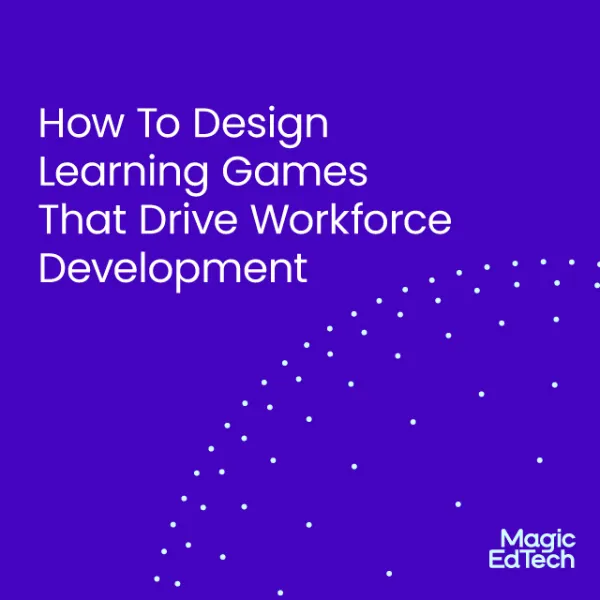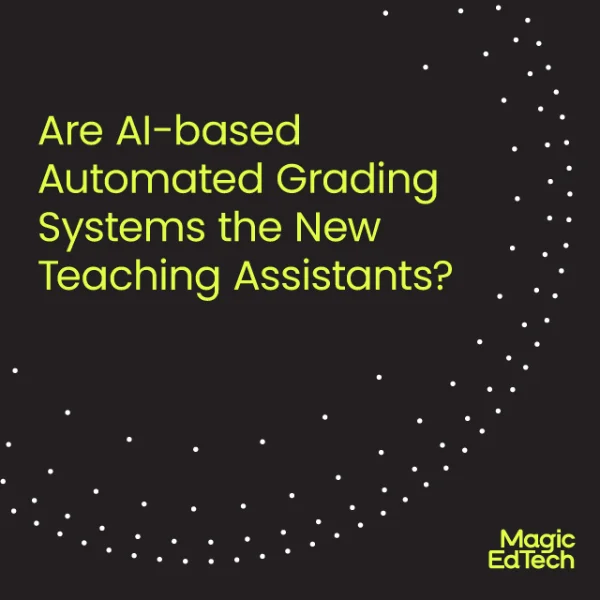EdTech’s 2024 Trend Forecast
- 29 December, 2023
- Reading Time: 5 mins
In the wake of the AI-powered tsunami that swept through the education industry in 2023, leaving an impact on how we teach and learn, we now stand at the threshold of a new year, ready to explore the evolving space of edtech. As we reflect on the rapid advancements and disruptive innovations witnessed in the past year, it becomes evident that the future of education is intricately woven with technology’s transformative capabilities.
Fueled by technology and innovation, the EdTech arena looks promising in the new year as we can expect 2024 to bring about a paradigm shift. Let’s take a look at how the intertwining of innovation and education will rewrite the rules of the classroom in the new year.
Tighter Tech Budgets
The clock is ticking for schools heavily reliant on the Elementary and Secondary School Emergency Relief (ESSER) Fund, a financial lifeline that fueled crucial technology advancements in education. According to research by Brookings Institution, on average the yearly decrease in expenditure will be more than $1,000 per student. The looming challenge revolves around maintaining the lifecycle of devices in the face of tighter budgets, which was previously supported by ESSER funds.
As districts face this funding drop, edtech providers will need to champion procurement strategies, scalable and sustainable technologies, and flexible pricing models to ensure tech advancements remain accessible and adaptable within the constraints of newer, leaner school budgets.
More and More AI
We cannot miss mentioning the ever-growing influence of artificial intelligence (AI) in edtech when we talk about upcoming trends. What started as a hot topic this year, is all set to evolve and expand further.
A staggering 44 million global teacher shortages have been reported by UNESCO this year. AI is proving to be a crucial tool, stepping in to aid educators who are grappling with burnout caused by understaffing by automating repetitive administrative tasks and facilitating efficient analysis of student data. However, while these AI tools won’t eradicate teacher burnout in 2024 – a deeper and multifaceted challenge in education – they can undoubtedly provide critical assistance in modern classrooms.
AI avatars are also coming up as virtual tutors to enhance personalized learning experiences. These adapt the curriculum based on students’ unique learning styles, leveraging machine learning and analytics to identify areas of strength and struggle. These avatars will transcend geographical barriers, creating collaborative and interactive learning environments that promote critical thinking and problem-solving skills among students, regardless of their physical location.
Looking beyond classroom settings, AI is making significant inroads into corporate education, with integration into learning management systems and the development of personalized training modules, automated workflows, and AI-driven mentor bots. Even in higher education, It’s poised to influence various aspects of the student experience, faculty research, and campus infrastructure, enhancing access to resources, automating tasks, and improving overall efficiency.
Blended eLearning 2.0
Blended learning, once a simple fusion of traditional and online teaching tools, has now metamorphosed into a powerhouse to create immersive learning environments. The Blended eLearning market is set to surge, catapulting from an estimated US$19.6 Billion in 2022 to a substantial US $65.4 Billion by 2030. Notably seen in the shortcomings of self-paced online learning platforms that promised flexibility but resulted in alarmingly low completion rates. This trend places a strategic emphasis on cohort-based learning, where completion rates skyrocket above 90%.
Harnessing the innate human desire for social interaction during learning, cohort-based learning simulates a vibrant classroom environment within a digital space, fostering collaborative discussions and shared experiences. Moreover, the transition from passive to active learning methods becomes a crux of this trend, and project-based learning as a key strategy.
Rise of XR
Extended Reality (XR) stands as one of the most anticipated edtech trends for 2024. With standalone VR headset prices expected to drop under $200 in 2024 and the affordability of mobile-based VR units, these technologies are becoming more accessible for schools to integrate into standard curricula.
XR is revolutionizing teaching methods by offering 3D models through AR, empowering educators to create immersive learning experiences, and reducing costs by providing virtual labs and VR field trips. Furthermore, XR technologies are also empowering special needs students by providing access to otherwise inaccessible experiences. VR aids students with disabilities by visualizing inaccessible environments As the global Augmented Reality in education anticipates a remarkable 32% growth, XR’s interactive nature enhances student engagement, boosts retention rates, and significantly contributes to academic achievements by transforming learning experiences through immersive content and 360-degree views.
Bite-Sized Learning for Gen Z
As attention spans shorten and Gen Z’s preferences for concise and engaging learning techniques, academics in 2024 will witness a shift towards brief, easily consumable content. Students are opting for concentrated information, favoring short films, podcasts, and visually engaging materials that balance efficiency with depth. Educators are embracing interactive, visually appealing forms of learning to match modern preferences, aiming for inclusivity and effectiveness. The trend gravitates towards bite-sized content encompassing videos, podcasts, audio snippets, and flipbooks for an energy- and time-efficient approach to learning.
With a decreasing number of students considering traditional college a vital part of their plans. A Business Insider survey revealed that only 39% of Gen Z view advancing their education as crucial, and 46% deem college costs unjustifiable. This sentiment reflects a growing skepticism about the value of higher education, especially as job markets evolve and offer lucrative opportunities that don’t mandate a college degree.
Cyber Resilience in EdTech
The zero-trust security concept, notably in identity and access management, is poised to gain significant traction within edtech this year. This approach fundamentally challenges traditional security paradigms by assuming that no entity, whether inside or outside the network perimeter, should be trusted by default. As educational institutions prioritize safeguarding sensitive data and mitigating cyber threats, the zero-trust model emphasizes strict identity verification and continuous monitoring of all activities.
Beyond traditional cybersecurity measures, cyber resilience encompasses strategies ensuring recovery and continuity post-breach or unforeseen circumstances. This extends to remote working protocols that enable operational functionality when physical access to centralized locations is impeded. Embracing automation in cyber defense through AI and machine learning, integrating comprehensive frameworks that merge security measures with continuity protocols, and staying vigilant about societal factors constitute essential elements of an effective cyber resilience strategy.
The horizon of educational technology in 2024 brims with promising advancements. From AI-driven personalized learning to the immersive experiences offered by extended reality (XR) and the growing focus on cyber resilience, this year presents a landscape ripe with innovation.
To harness the potential of these upcoming trends, engaging with our experts can be your gateway to innovative solutions and impactful advancements. Get in touch with us today to elevate your EdTech solutions and prepare for the exciting innovations shaping the future of education.




